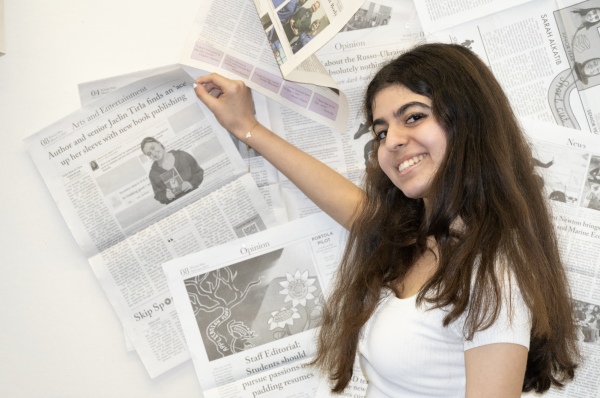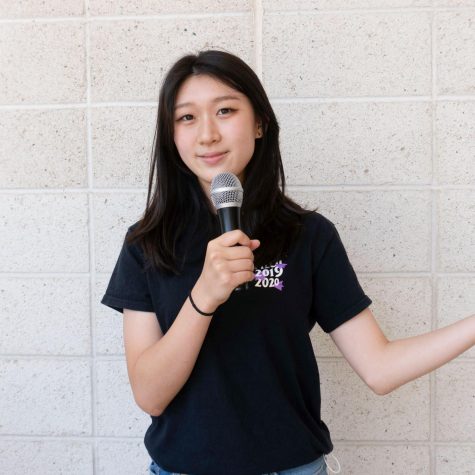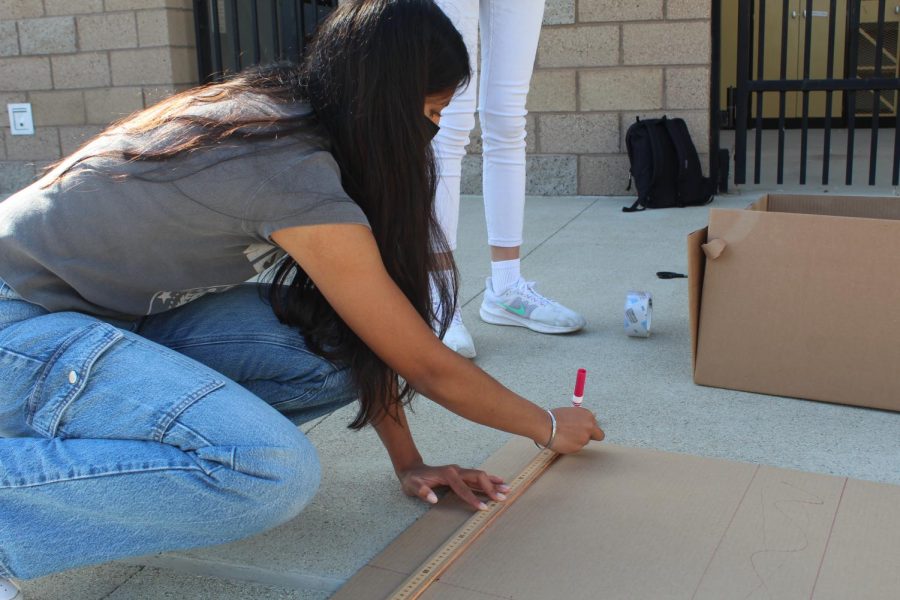AP Physics Classes Splashes Into Summer with Final Project of the Year
Junior Sarika Menon works on measuring out the length of her boat in preparation for the race. The size of the boat will be a crucial factor in determining which group will ultimately win the race, according to junior Sharon Chen.
AP Physics students spent hours upon hours, poring over pages and pages of notes, tirelessly memorizing formula after formula. Staying awake until the weary hours of 4 a.m., they desperately hoped for the ever-elusive score of a 5 on their Advanced Placement test, expecting to finally be done. But little did they know their teachers hnd an interactive project in store: the boat project.
Students worked on designing, building and testing their cardboard boats in preparation for a class boat race during finals week May 31-June 3, according to physics teacher Ryan Johnson.
“We have done this project in the past, and it’s a fun way to do something engineering-related that is outside of the scope of the AP class so that people aren’t stressing about how it’s related to the AP test,” Johnson said.
Physics students must consider many things to emerge as the victors with the fastest boat, from the number of people who can fit in the boat to the specific shape of the boat, to even the number of alterations that can be made to the boat during a given period of time.
“Something we talked about was, should we have two people in the boat or one? Because having two people would give it more stability, but then one person would make it go faster,” junior Cindy Ding said. “But I think we decided on one person because we want to win. [It would be] amazing. I would be the happiest person on the planet.”
After much deliberation over design tactics, the students finally began to construct their boats from scratch during their class periods, working in groups of 3-4 people. One strategy was to make the boat lengthy and thin, much akin to a canoe, according to junior Sharon Chen.
“I think the point of this project is to apply all of the physics knowledge we have learned as well as to make a fun, hands-on project,” Ding said. “In physics, we have labs, but we don’t get to do a lot of engineering and hands-on stuff, so this is very dependent on how we do without instructions.”
In addition to being a fun and entertaining way to wrap up the school year, the boat project also manages to add on some education of relevant topics for the future. Fluid mechanics is set to be added to the AP Physics 1 curriculum next school year, making the lessons learned in the implementation of this project a contribution to the academic experience.
“People knowing science is one thing, but being able to translate into an actual, physical design really changes the way you think about it, and having to get into the boat encourages people to think about the engineering safety factor of their design,” Johnson said. “They don’t want something that barely works because they might tip over, so they have to think about building things that people can safely use.”
Your donation will support the student journalists of Portola High School. Your contribution will allow us to purchase equipment and cover our annual website hosting costs.

Tara Vatandoust is an Editor-in-Chief for her third, and sadly, final year on the Portola Pilot. This year, she is looking forward to (finally!) being...

Bia Shok is the co-news editor for her third and final year on the Pilot! She is super excited to expand the Pilot’s influence even further this year...




